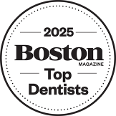May 3rd, 2017

Summer is almost here, which means a season full of vacations, adventures and great memories is just around the corner for our patients at Convivial Dental.
Everyone wants a glowing and radiant white smile when the sun comes around and we have a few reminders to keep your pearly whites healthy and beautiful over the summer! Try to stay away from drinks that will stain your teeth like coffee, soft drinks, or dark colored juices. Not only will drinks like this weaken your enamel but they will also darken that fabulous smile you're working on! Another tip is to try and focus on brushing your teeth; everyone knows that when busy schedules start picking up, getting a good brushing session in tends to take the backseat! A good tip for keeping your mouth safe from staining and other possible pitfalls is to rinse your mouth with water after any meal you can’t fully brush your teeth after. Your teeth, inside and out, will benefit!
And remember, whether you are headed to a barbecue, a camping trip, or just having fun in the backyard this summer, we want to hear all about it! Make sure to let us know what you’re up to below or on our Facebook page! We also encourage you to post any photos from your adventures!
April 27th, 2017
On March 3, Chairman of the Department of Pediatric Dentistry at Boston University and Professor of Dentistry, Dr. Zavras lectured at the Pediatric Sleep Disorders Symposium, a 2-day workshop for dentists. Dr. Zavras lecture was on issues of pediatric airway assessment and early treatment of ankyloglossia. During the panel discussion Dr. Zavras offered practical advice to orthodontists, pediatric dentists and general dentists on how to diagnose and treat airway problems.
Sleep apnea is associated with heart disease and other serious diseases in later life. Sleep apnea is a rare but serious problem in childhood. Children who snore require a comprehensive assessment to find out what causes the problem. Early identification and treatment is important. Convivial Dental is a pioneer in early airway assessment. Parents are encouraged to seek consultation if they notice that children snore.
April 26th, 2017

According to the American Association of Pediatric Density, roughly one in five children suffers from canker sores. Canker sores are small sores that appear inside the cheeks, on the lips, on the surface of the gums, and under the tongue.
Even though, canker sores are not contagious, they do tend to run in families. There are several reasons your child may be suffering from canker sores including:
- Children who have Vitamin B12, iron, and folic acid deficiencies tend to get canker sores more often than children who have normal levels of these vitamins and minerals.
- Children who suffer from food allergies are also at a higher risk for developing canker sores. It’s difficult to determine what your child may be allergic to. If you feel strongly that the canker sores are related to an allergy, then a visit to an allergist is highly recommended.
- Biting their lip or cheek can also result in a canker sore.
- Any injury to mouth, where the skin breaks can cause a canker sore.
- Brushing their teeth too hard can also be a problem.
- Your child may be sensitive to an ingredient in their toothpaste. Try switching toothpastes and see if it makes a difference.
- Emotional disturbances and stress are also factors to consider.
If your child has frequent canker sores a visit to our Chestnut Hill, Massachusetts office will be beneficial. Canker sores are painful and usually last about 14 days. Drs. Cartsos and Zavras may recommend one or a few of the following treatment options:
- Avoid food that is acidic, salty, and spicy.
- A toothbrush with soft bristles may be helpful.
- Avoid mouthwash and toothpaste that contain SLS.
- Do not feed your child foods that they may be allergic to.
Canker Sore Remedies
- Eating yogurt that contains Acidophilus will relieve the pain and help the canker sore heal faster.
- Put one teaspoon of baking soda in an eight-ounce glass of lukewarm water. Have your child gargle and swish it around his or her mouth several times a day. Not only does this remedy relieve the pain, the canker sore could be gone in as little as 24 hours.
- Place a wet tea bag on the sore and hold it there for a few minutes several times a day. This remedy will help with the pain and quickly heal the sore.
- Camphor, Benzocaine, Lidocaine, and Orajel are over-the-counter medications that can help.
If you have questions about your child’s canker sore, contact Drs. Cartsos and Zavras to schedule an appointment.
April 19th, 2017

After you complete your orthodontic treatment at our Chestnut Hill, Massachusetts office and have your Damon Smile braces removed, you will most likely be given a retainer to wear by Drs. Cartsos and Zavras. Retainers will help protect all of the time and money that you’ve invested into your newly aligned teeth, by keeping them in place for many years to come. You will have the self-confidence to smile proudly and know that you have had the best possible treatment.
Permanent Retainers
Many orthodontists prefer to place a permanent bonded retainer behind your front teeth, either on the top or bottom or sometimes both. These are preferred due to the fact that they can be placed on your teeth and forgot about. There is no need to keep track of it, or worry about losing or cleaning it. They are the simplest to deal with long term, and they last can last for many years.
Removable Retainers
Many people do prefer removable retainers but there is a bit more maintenance that you need to be aware of if you choose to go this route.
- You must remove your retainer while you eat and drink.
- You must remember to wear as your orthodontist advised; most patients wear them all night.
- Remove when brushing your teeth and also brush the retainer.
- Retainers can break, so be careful with them.
In order to know what is the best method of caring for your smile after your Damon Smile braces are removed you should speak to Drs. Cartsos and Zavras. You definitely want to protect your investment and smile!










